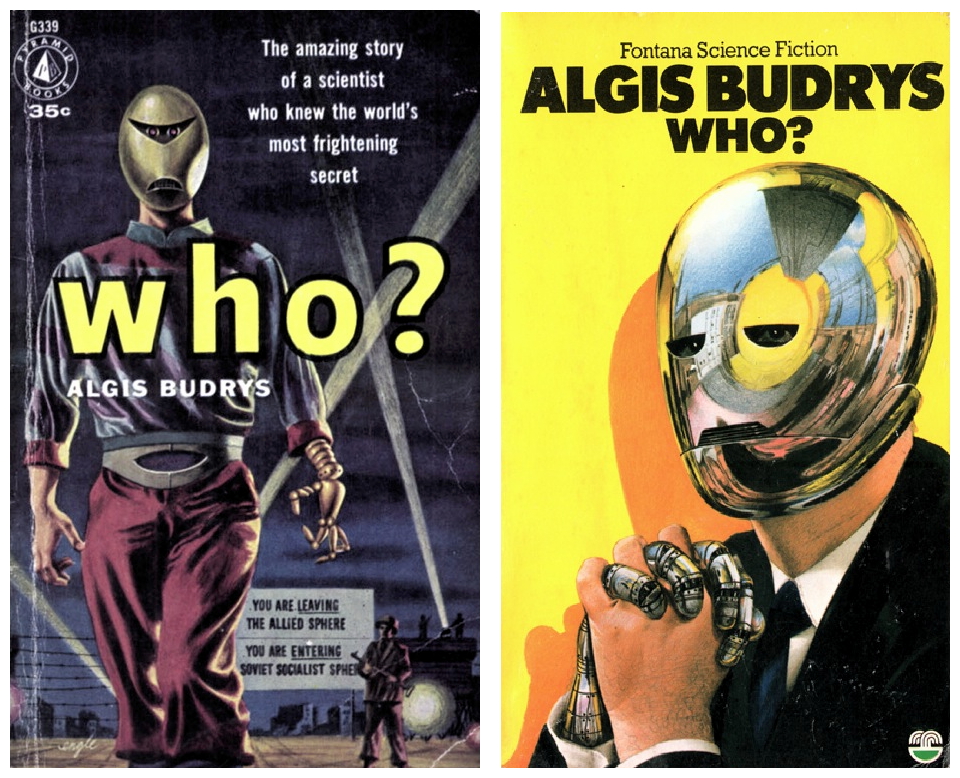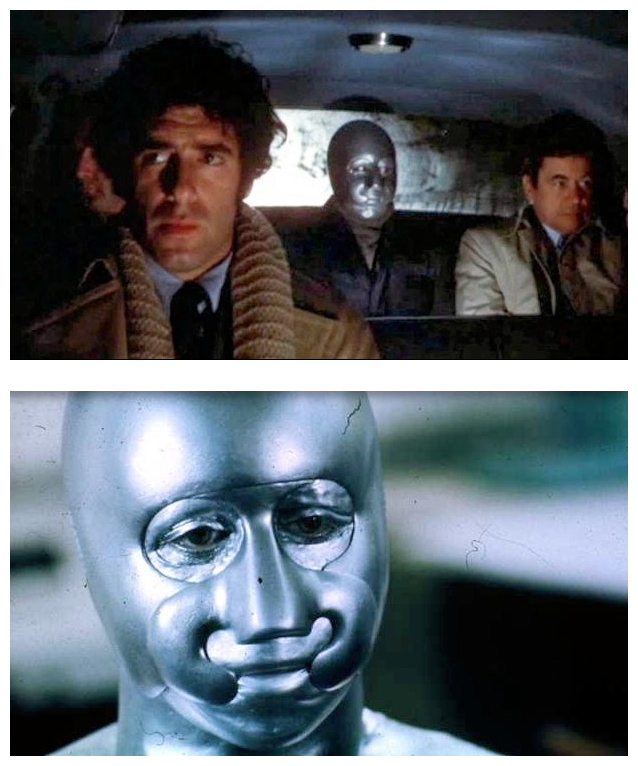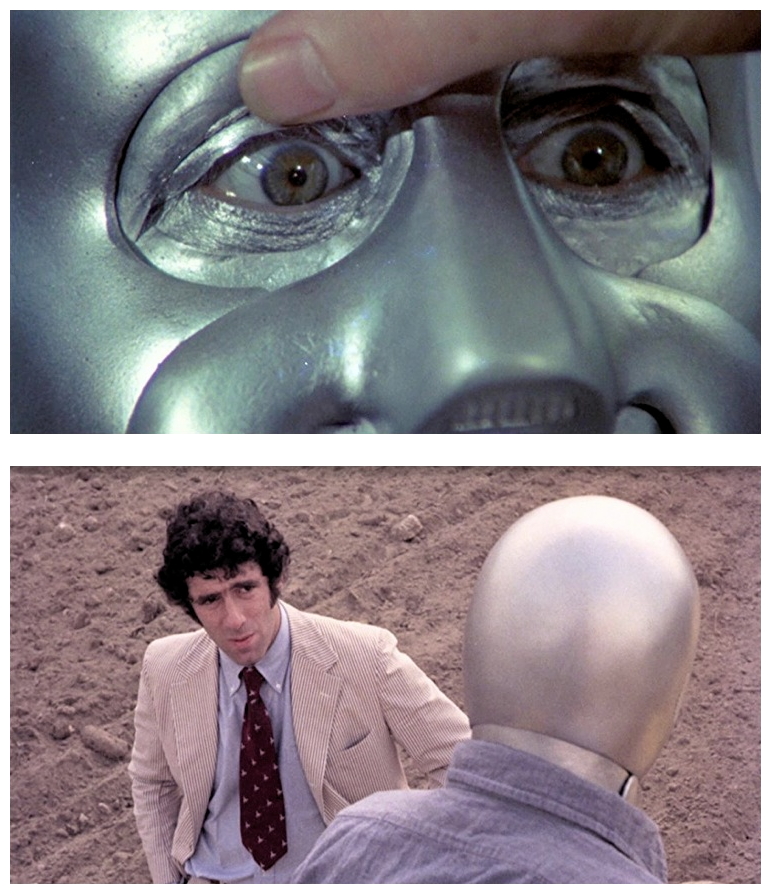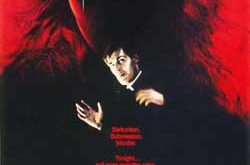
SYNOPSIS:
“After an American scientist is severely injured and scarred in a car crash along the border with East Germany, he is captured by East German military. The scientists use metal implants to save him. Once he’s back in the States, no one can tell if it’s really him, so an intelligence specialist must determine who is under the mask.” (courtesy IMDB)
REVIEW:
Newcomers to the genre often assume that a science fiction story must be about technology. This is incorrect. Some of the questions that science fiction tackles best are psychological and philosophical. Because it allows bizarrely new perspectives, science fiction can give us new insights into traditionally difficult areas of thought. Written by respected science fiction author Algis Budrys, Who? was first published in novel form in 1958, in which an American scientist is badly injured in an explosion, then ‘repaired’ by Soviet doctors and returned to the United States. The problem is that he is now a cyborg, more machine than man, and no one can really be sure of his true identity. This clever Cold War thriller is a fine study of dehumanisation and alienation which established the young writer’s reputation.

Adapted by screenwriter John Gould and directed by Jack Gold (because of the similarity in their names, some suggest that these two were one and the same person, but this is simply not the case), Who? (1974) concerns a key American scientist named Lucas Martino (Joseph Bova) who is terribly injured in a car accident on the East European border. Later he is returned to the West by the communists who have patched him up, but so badly was he damaged that they’ve had to provide him with a metal face and matching metal arm. A team of American security investigators led by FBI agent Sean Rogers (Elliott Gould) are worried. How do they know for sure that the Russians haven’t slipped them a counterfeit? This maimed person who looks like a robot might have been brainwashed or worst, he may be a double agent, and almost the entire film is dedicated to their attempts to establish his identity.

Sadly, as a machine-man, the scientist shows more feeling than he ever showed as a man (if it is indeed he) as revealed in a touching scene with ex-lover Edith (Kay Tornborg). The human political world is portrayed as machine-like, while the prosthetic monster may be more human than any of us. Eventually he becomes a farmer, all questions of identity being rendered irrelevant, as they were all along. Who? is an efficient little metaphysical thriller, and viewers are given just enough information to solve the mystery, provided they’re gifted with a sense of irony. There is much talk and very little action – director Jack Gold is known for his British television dramas made on limited BBC budgets and, unfortunately, it shows here. Many of the scenes are so detached and grey that the film has an overall ‘cold’ feeling to it – an air of cynicism hangs over the entire proceedings.

This actually damages the film in some ways and undoes the effect of fine performances and a thought-provoking story, so viewers will need to give it a certain level of attention in order to follow the plot and understand what’s going on. Those who prefer special effects, explosions and other such ‘eye candy’ will definitely not enjoy it. Elliott Gould (with more than two hundred film and television credits) does well as humourless agent Rogers, whose sense of accountability towards national security motivates (and occasionally clouds) his quest for the truth. Also good is Shakespearian-trained Trevor Howard as the Russian Colonel Azarin, seen in flashback trying to brainwash the injured Martino (not until the end of the movie do we learn if his brainwashing efforts were successful). Perhaps best of all is Joseph Bova as the robotic victim, evoking a mix of sympathy and suspicion with his voice and mannerisms, despite the fact that his face is concealed behind an inexpressive metal mask.

“You think panic has something to do with the heart racing, the nerves getting tense, the breath getting laboured? Mine doesn’t, but I’m in a constant state of panic, Mr. Rogers. My mind is poised for flight. I’m on the edge of screaming all the time, except that if I did more people would stare at me and that would make me scream more until I wouldn’t be able to stop!” While no classic by any stretch of the imagination, Who? remains a commendable little film which explores issues of identity and political paranoia in an effective way. It may not be as gripping as the original novel it was based on, but the film didn’t deserve to be consigned to obscurity upon its delayed and muffled release. It did get an official press screening in Britain in April 1974, but it never opened theatrically and remained unseen in that country until it was shown on BBC television several years later. It briefly appeared on American cinema screens in August 1975 under several titles including Prisoner Of The Skull and The Man In The Steel Mask, and was eventually released on VHS in 1987 with the frankly awful title RoboMan, no doubt an attempt to cash-in on the success of RoboCop (1987).

It’s odd how often science fiction films ask, when is a person not a person? The question has more relevance when asked today (a time when we see humans as an impermanent element in an evolutionary spectrum) than it would have in previous centuries when we saw ourselves at the top of the hierarchy of created life. Old horror used to deal with the emergence of the beast, but new horror deals more with the loss of the beast, the loss of the animal warmth that we think of as a part of being human. We have a fear that whatever replaces us, or whatever we evolve into, may be a creature of intellect lacking both love and anger, which is also reflected in the classic Invasion Of The Body Snatchers (1956) and its many remakes, but that’s another story for another time. Right now I’ll invite you to please join me next week when I discuss another schlocker from the locker for Horror News so, until then, good night and remember, as my old friend Bela Lugosi would say, “Bevare! Bevare of the big green dragon that sits on your doorstep – and the gifts it leaves on your lawn!” Toodles!

Who? (1974)
 Horror News | HNN Official Site | Horror Movies,Trailers, Reviews
Horror News | HNN Official Site | Horror Movies,Trailers, Reviews

